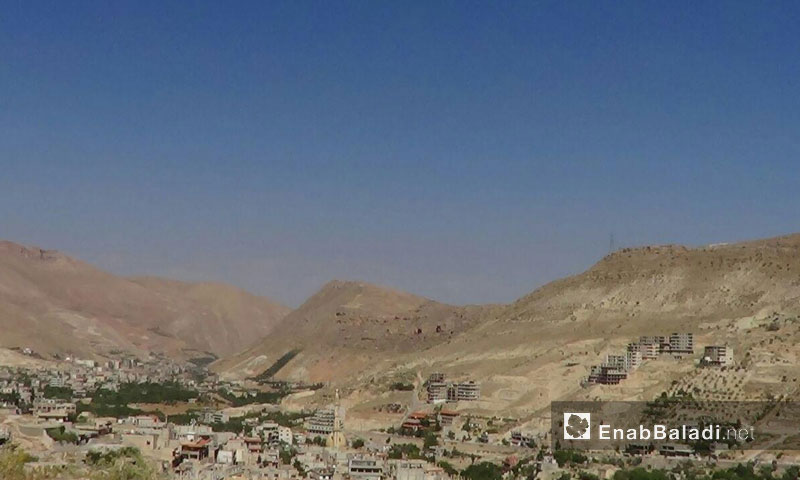



The area of Wadi al-Barada in the western outskirts of Damascus enjoyed relative calm for a time before regime forces intensified their attacks on the area in a move to push residents and fighters to agree to a settlement and evacuate the area, as has happened in many other areas in Damascus’ western countryside.
Regime warplanes targeted villages in the area with thermobaric missiles and explosive barrels on 22 and 23 December 2016, killing nine civilians and injuring many, especially as the local Civil Defense force and the medical association in the area were both out of service.
Enab Baladi spoke to Mouadh al-Qalamouni, a media activist in the area, who reported that the al-Assad forces and their militias used all kinds of weapons and missiles against the area throughout the two consecutive days. He said 10 air strikes had been launched against the area and 26 explosive barrels dropped on the villages.
On 24 December, Enab Baladi tried to communicate with several activists in the area but the Syrian regime had cut off the mobile phone network, the local phone network in the area and the ADSL network.
Pro-regime pages on social media admitted that the local field hospital and the media center in the area had been destroyed and all forms of communication cut. The pages spread a rumor that several offers were made to the opposition factions in the valley to agree to a settlement and surrender all the areas they currently control. Pro-regime pages published video recordings showing the area being bombed by warplanes and heavy artillery. They mentioned that the al-Assad forces are preparing for the second phase of the military campaign on the valley.
Activists in the area spoke of warplanes and helicopters targeting the village of Ein al-Fija, which was subjected to around 60 airstrikes, dropping explosive barrel bombs, napalm-filled barrel bombs and thermobaric missiles on the village, civilian houses, roads and the village’s mosques.
The Ein al-Fija pumping station was the target of around half the aerial strikes. Over 40 explosive barrel bombs and thermobaric missiles, dozens of mortar rockets and thousands of machine gun rounds were directed at the station.
The attack caused the station to go out of service and led to the contamination of the spring water with diesel, oil, petrol, and large quantities of chlorine when part of the station exploded and its material and the generators’ material mixed with the water.
Pro-regime pages accused opposition factions in the area of attacking the station to cut off the water supply to residents of Damascus city.
In conjunction with the aerial strikes and intense bombing on the Wadi al-Barada valley, the regime’s Republican Guards tried to storm the village of Bassima while Lebanese Hezbollah fighters sought to advance from the Jabal Habeel barracks towards the village of al-Husseiniyya, but the opposition factions in the area managed to ward off the attacks. Clashes erupted between the two sides, forcing the Hezbollah fighters to retreat.
The area of Wadi al-Barada was besieged for around five months, aggravating the humanitarian situation of thousands of families in the area before the regime reopened roads leading to the area towards the end of 2015 as part of a truce that opened the Wadi al-Barada route and restored the al-Fija water supply to the capital Damascus.
if you think the article contain wrong information or you have additional details Send Correction